10 instructor-led training activities for before, during, after training

“Despite declines, half of all employee training hours are still spent in instructor-led classrooms.”
From ATD’s 2017 Statue of the Industry report, this quote is the core of Sam Cauthen’s “Get more out of ILT” webinar.
Cauthen is the COO and Head of People Operations at Poll Everywhere with a background in consulting, organizational design, and marketing. Her webinar made a simple case: proper instructor-led training primes students before class, engages them during class, and follows up after class.
“All of this matters because of the important role growth and mastery has in employee life cycles. The perception of growth and mastery has been shown to be correlated – in fact, key – to metrics businesses care about, such as employee engagement, retention, and ultimately company value.”
– Sam Cauthen, citing Gallup, Steven Schmidt
Summarized below are the key takeaways from Cauthen’s “Get more out of ILT” webinar, including several examples of instructor-led training activities you can use before, during, and after your class. You can also watch the webinar in its entirety below. Together, these activities emphasize repetition to improve recall. They also maximize results by surfacing the activities at strategic points in the learning cycle.
Instructor-led training activities before your class
Find out what attendees want to learn and set expectations
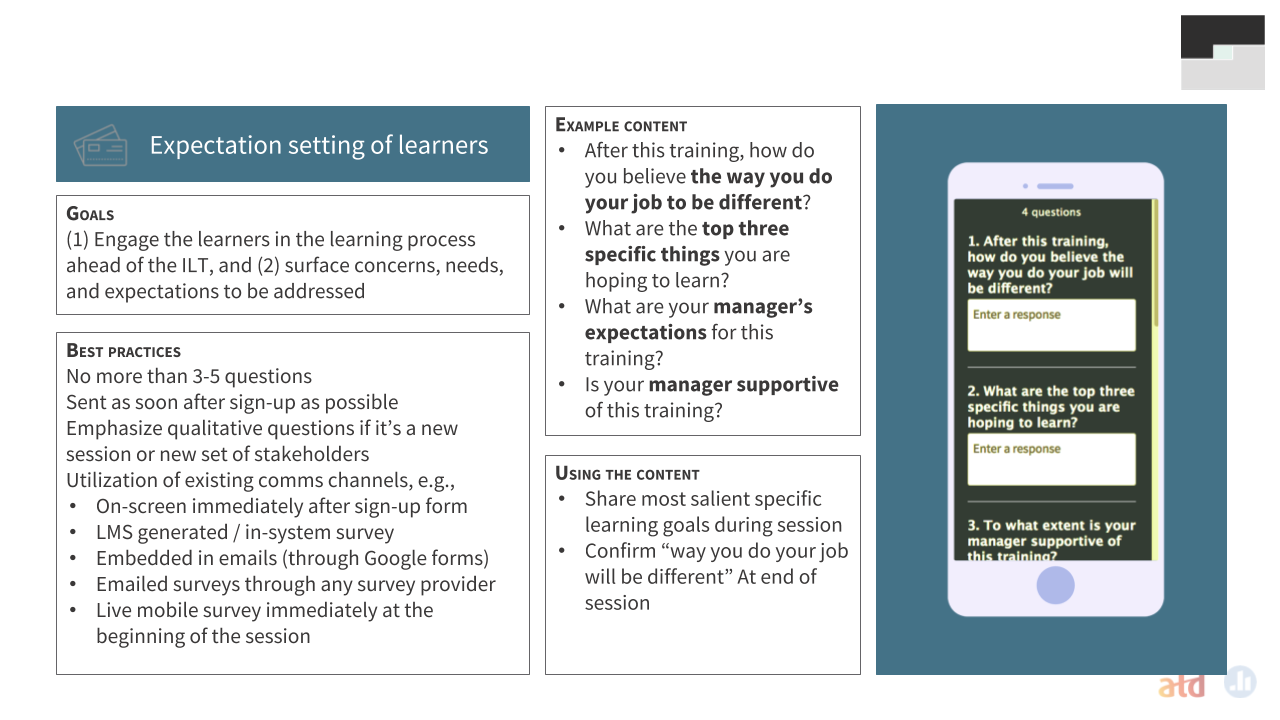
Reach out to attendees with a short survey as soon as they sign up for your training. This survey will help you assess expectations, as well as attendees’ familiarity with the material. You can present the results of this survey at the beginning of training to further clarify what will (and will not) be covered.
This survey is different from a needs assessment (discussed below), and more closely resembles an opinion poll. A few example questions are located in the slide above. Simply asking for attendee feedback before the training shows you’re invested in their success, and signals this will be an active learning experience.
Find out what attendees need to learn from direct managers
Attendees will tell you what they want to learn, but managers will tell you what they need to learn. Engaging direct managers, either through a brief survey or 15-minute interview, is vital to defining the goals of your instructor-led training. Managers can also help reinforce what you taught if they know, and support, the course’s goals.
Build curiosity and anticipation with simple activities
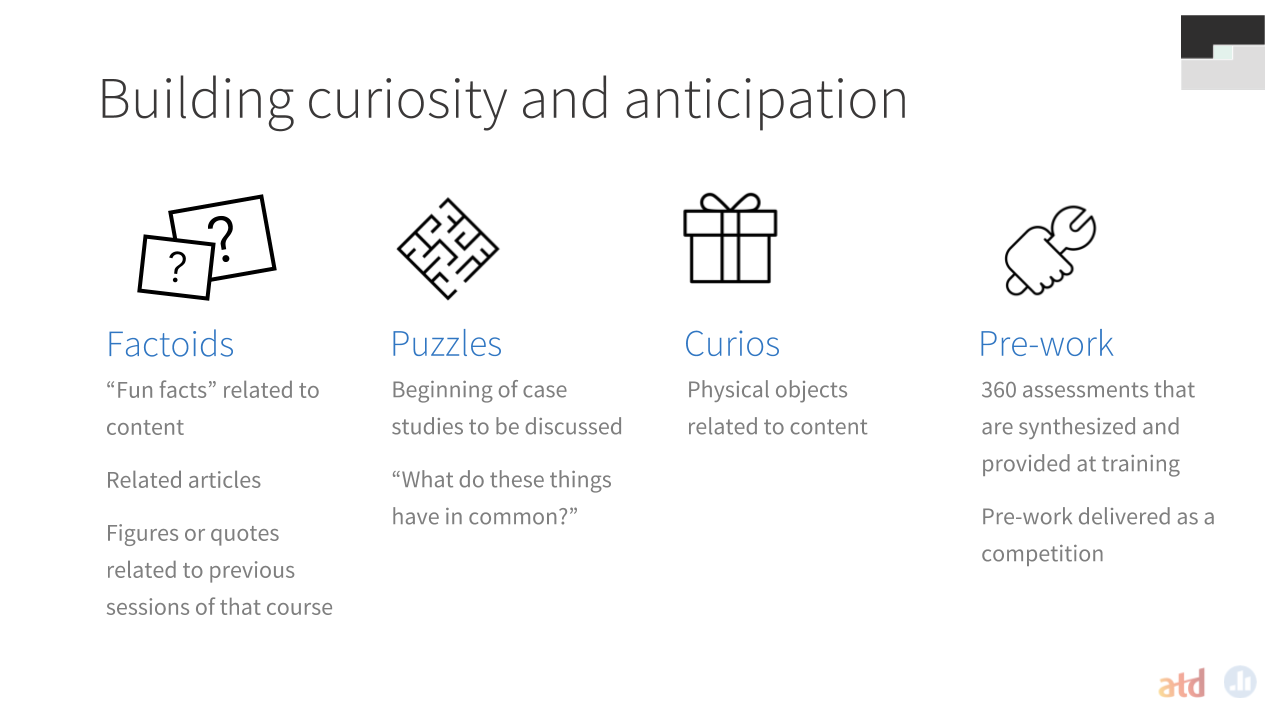
The slide above contains activities you can use to get attendees excited (or at least a little curious) about your class. As Cauthen states, “When they’re curious, people work harder to find answers, remember the answers, and enjoy feelings of reward.”
You won’t use all of these activities for every class. Instead, you’ll tailor them to the subject matter and preferences of your audience. Cauthen called out the pre-work activities in particular as being very well-suited for managerial or coaching classes. She recommends framing them as a daily trivia contest leading up to the training. The results are then shown at the start, a great way to tease out what will be discussed.
Instructor-led training activities during your class
-
- Yale professors Gabriel Grant and Jason Jay use open-ended polling with Poll Everywhere in their workshops on facilitating difficult conversations. Grant and Jay ask attendees to think of specific conversations that have ended in “gridlock” and reply to an open-ended poll with, “What are you thinking and feeling about the other person but not saying?” The group then dissects these responses and workshops more productive conversations.
- Mind mapping or bullet journaling helps attendees break down complex concepts into digestible nuggets of information. Mind maps are then displayed during breaks – roadshow style – and discussed with other attendees.
- Choose-your-own-adventure is classic active learning technique. Again, Poll Everywhere can be used to quickly whip up questions that engage the entire room without putting anyone on the spot.
- Commitment letters are a method Sam uses regularly at Poll Everywhere. Attendees pen a letter to themselves outlining how they’re going to act on the information presented at the training. The instructor waits 4 – 6 weeks and then sends out the letters in the mail. Attendees then receive a brief survey asking how they delivered against the commitment they made to themselves.
- Relationship-building activities have been growing in popularity. Find them all in the slide below:
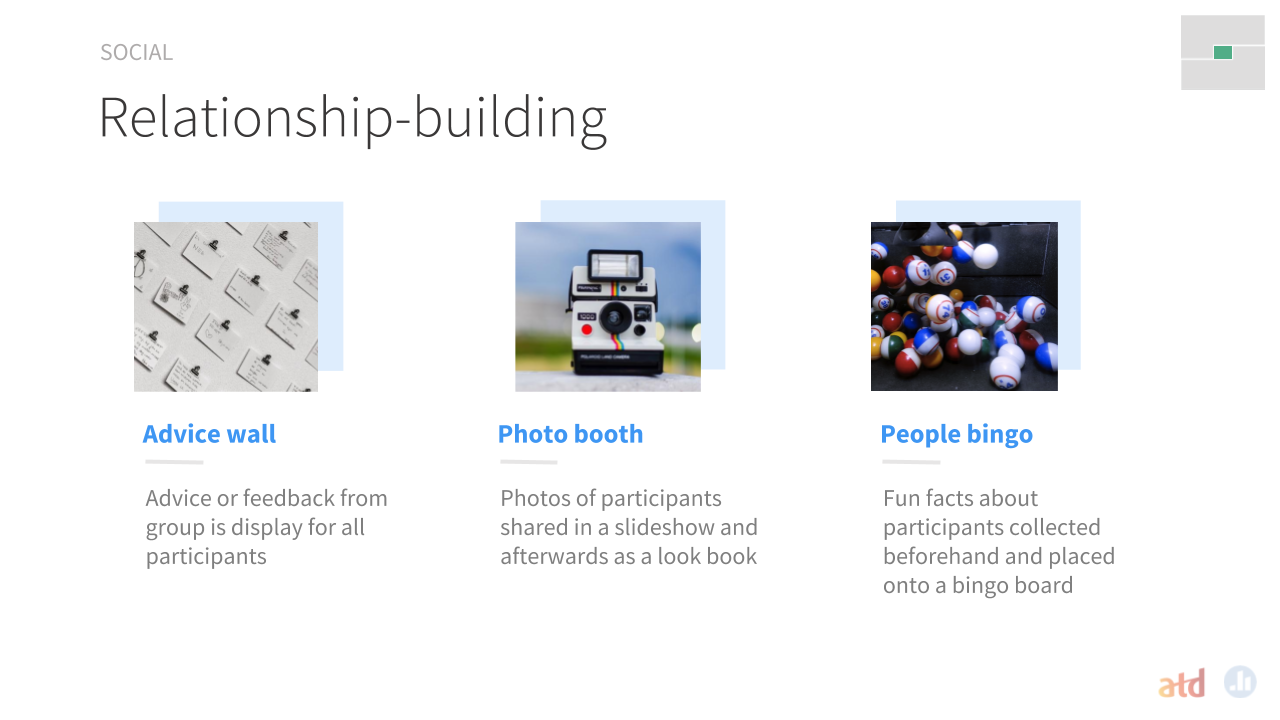
Instructor-led training techniques after your training
This stage of the process is too often neglected. Citing Knowles’ Theory of Andragogy, Cauthen says, “Adults need to be involved in the planning and evaluation of their instruction.” That evaluation starts with the pre-class surveys mentioned earlier, and ends with post-class activities such as a “Lookbook” of attendees, targeted follow-up questions, and more. However, Cauthen’s preferred follow-ups are those that help summarize and synthesize what attendees learned.
Custom infographic
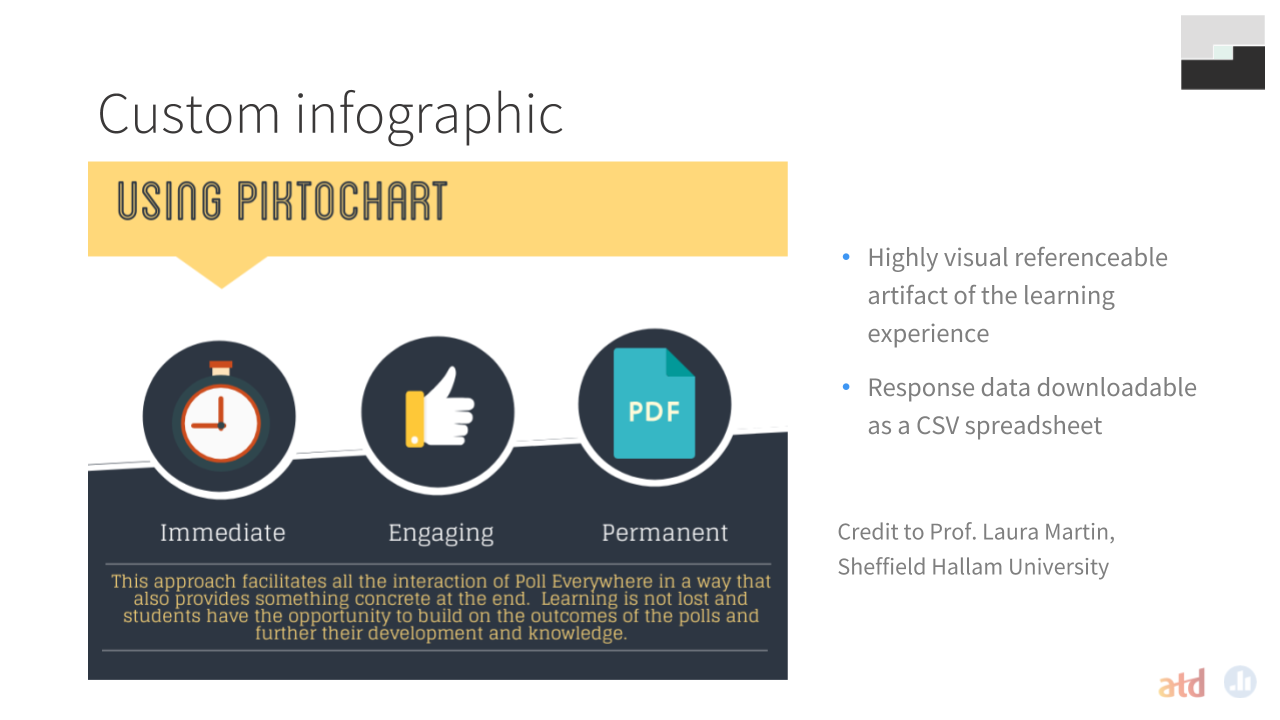
Instructors who use a lot of attendee participation and interaction in their training will sometimes prepare an infographic template to be completed and distributed after class. The template is filled in with either individual response from the attendee who is receiving it, or an aggregate of all responses from the class. Either way, it acts as a visual reminder of the training.
Job aids co-developed during training
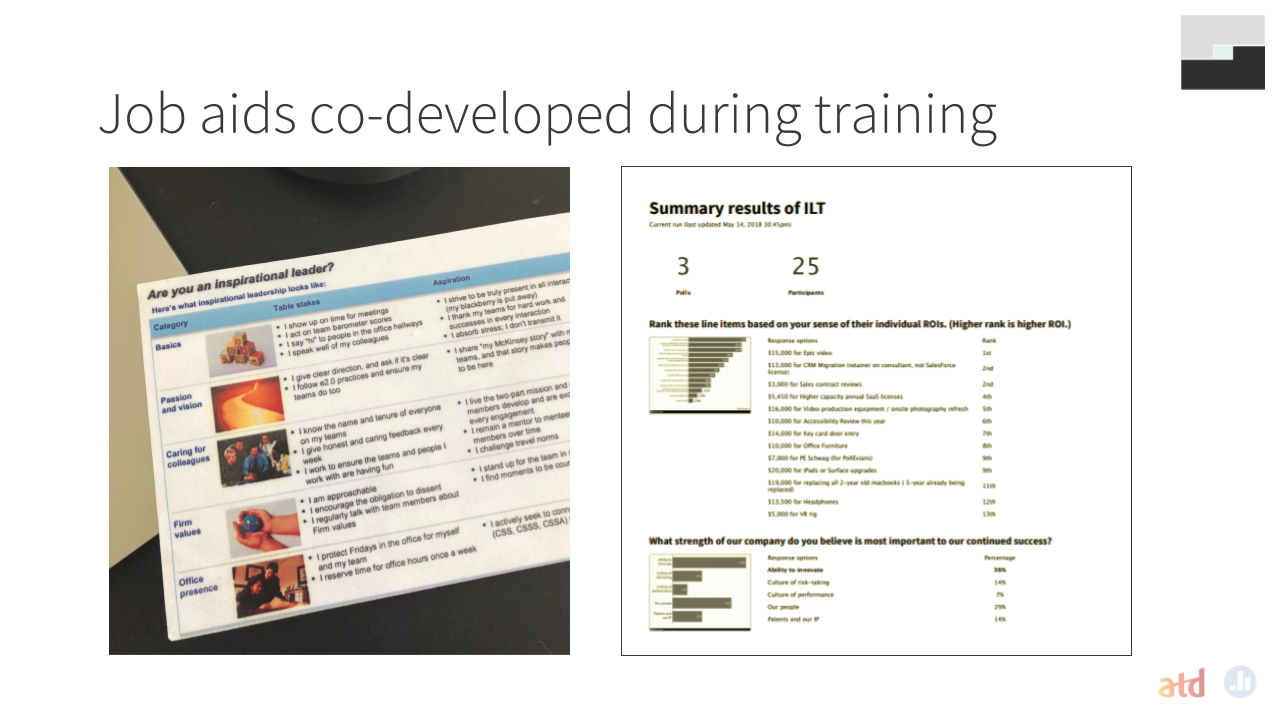
The image on the left in the slide above is a job aid Cauthen has kept on her desk for the past 14 years. As she explains, this aid is powerful because it is germaine to the experience itself and recalls activities that went into creating it. The image on the right is a facsimile of this aid created using a Poll Everywhere report.
Register for Cauthen’s next webinar on creating ILT activities
